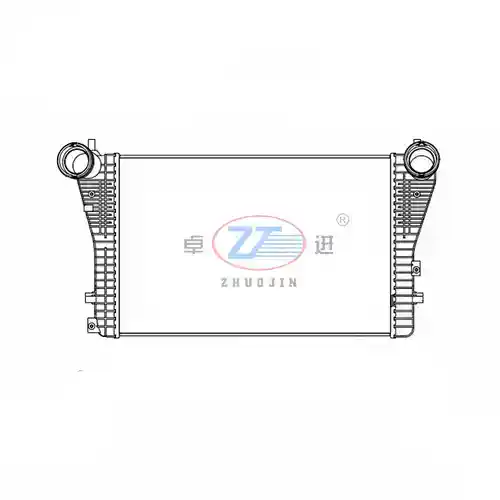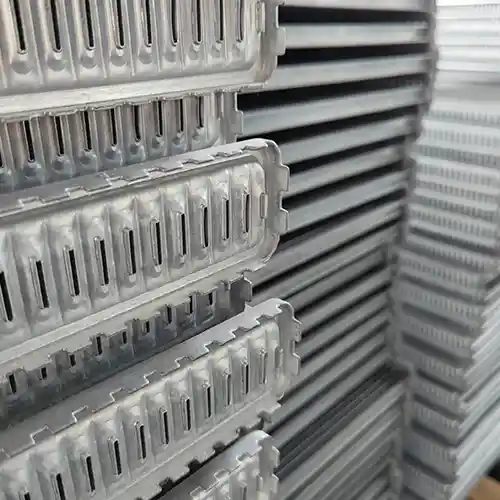



The radiator of a car engine is an important component of the car. Its function is to transfer the heat generated by the engine through the coolant to the radiators, and then dissipate the heat to the outside world through the fan or air convection, thereby maintaining the normal operating temperature of the engine.
The structure of a car engine radiator is generally composed of a water tank, a heat dissipation core, a fan, and pipelines.
The heat dissipation core is the core component of the radiator, which is composed of many small heat dissipation pipes and fins, forming a large surface area and improving heat dissipation efficiency.
The performance and lifespan of automotive engine radiators are related to factors such as material, design, and maintenance. Generally speaking, aluminum radiators are lighter, more corrosion-resistant, and more energy-efficient than copper radiators.
Aluminum engine radiator material
| Part Name | Material |
| side plate | 3003 |
| haed plate | 7072/3003/4343 |
| Aluminum tube | 3003 |
| aluminum fins | 4343/3003/4343 |
| Plastic Tank | PA66-GF30 |
| Oil cooler | copper |
| Outer side plate | iron |
Engine radiator production process
1, Core assembly
Assemble the aluminum tube, aluminum fin, head plate, and side plate together using a professional machine, bundle them with an SS201 wire, and lay them flat on a tray
2, Aluminum brazing
Place the assembled aluminum core on the workbench of the brazing furnace, and the machine will automatically weld the core of the engine radiator
3, Install plastic tanks
Place the welded core on a dedicated machine, and the workers assemble the rubber sealing ring and plastic tank together. The machine will press them together to form a complete engine radiator
4, Leakage test
Every engine radiator undergoes strict leak testing, and the entire process is very simple. Simply place the radiator on the workbench of the testing machine, use a dedicated tool to seal the radiator’s outlet, and the testing machine will start detecting the radiator and automatically complete all tasks




 wechat
wechat